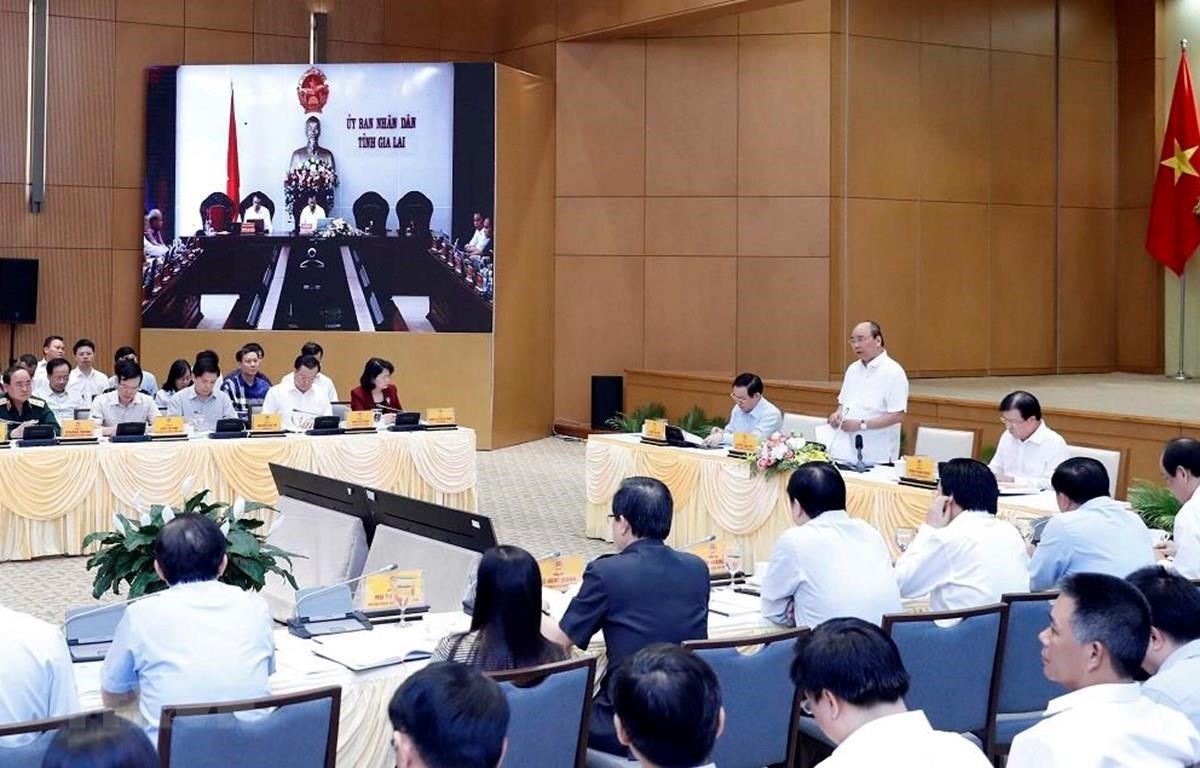Slow public investment disbursement seen in ministries, localities

Hanoi (VNA) – Budget disbursement of under 50 percent have been seen in 31 ministries and sectors as well as 19 localities, and even less than 30 percent in 18 others.
“In general, the socio-economic situation in the first nine months of this year saw positive signs with stable macro-economy and progress in production and social aspects, contributing to the completion of all goals for 2019. However, the disbursement of public investment was a black point in the whole economic picture,” stated Minister of Planning and Investment Nguyen Chi Dung at a national teleconference on speeding up the public investment allocation and disbursement in 2019.
He clarified that the total investment from the State budget for 2019 that was approved by the National Assembly is 429.3 trillion VND. By December 31, 2018, the Ministry of Planning and Investment (MPI) submitted to the Prime Minister a detail plan for the allocation of 367 trillion VND, or 85.5 percent of the total.
He underlined that the 14.5 percent of capital excluded in the plan is not a direct reason for the slow disbursement.
Ineffective adjustments
Under a report by the Ministry of Finance, State budget disbursement in the first nine months of 2019 is estimated at over 192 trillion VND, equivalent to 45.17 percent of the National Assembly’s plan and 49.14 percent of the plan assigned by the PM, lower than the figure recorded in the same time of 2018.
The disbursement of both Government bonds and official development assistance (ODA) remained low. Only seven ministries and sectors and 14 localities reached disbursement ratio of over 70 percent. Meanwhile, many others saw the ratio under the average level. Specifically, 31 ministries and sectors as well as 19 localities had disbursement level of under 50 percent, including 17 ministries and agencies and one locality reaching only less than 30 percent.
The MPI leader pointed out that in 2019, the ministry proposed the Government continue assigning plans to ministries, sectors and localities. So far, the capital included in the plans is over 391 trillion VND, equivalent to 92.16 percent of the total estimate. The capital that has yet to be included in the plans is about 33.68 trillion VND.
He held that the major reasons behind the slow disbursement include lack of a list of projects for investment or insufficient procedures for investment in the projects, and the ministries, sectors and localities’ returning of capital to wait for policy adjustments from authorized agencies. Meanwhile, the amendments have yet to be effective.
Due to incomplete administrative procedures, the Ministry of Transport and Ministry of Health as well as some localities failed to spend 4,265 billion VND of G-bonds.
Besides, a number of ministries, sectors and localities have yet to complete the list of projects fulfilling all procedures with total capital of over 15 trillion VND. Alongside, 1.95 trillion VND allocated to the socio-economic development programme for regions has yet to be disbursed to wait for the Government’s approval of the programme’s adjustments.
Particularly, unallocated ODA capital is over 14.3 trillion VND as the majority of projects are on the process of completing administrative procedures.
Minister Dung said that three ministries and six localities have returned more than 8.5 trillion VND of State budget.
 The disbursement of public investment is a black point in the whole economic picture (Photo: VietnamPlus)
The disbursement of public investment is a black point in the whole economic picture (Photo: VietnamPlus)
Unrealistic plans
Analysing the reasons behind the situation, the minister held that 2019 is the year with many adjustments in middle-term plans, thus prolonging the time for review and approval by authorized agencies.
In addition, the designing of public investment plans in ministries, sectors and localities remained ineffective, leading to plans that are unsuitable to the reality as well as regulations on priorities, thus making it impossible to allocate the capital for the plans, he said.
He added that there is still the mindset of maintaining slow disbursement in first months and speeding up the work in the rest months of the year.
The MPI has proposed four groups of solutions to complete the socio-economic development goals for 2019.
In terms of institution, the ministry suggested the removal of regulation that a project must have investment decision before October 31 of the previous year to be eligible to receive the capital, along with the regulation of saving 10 percent of the total money for projects using G-bonds capital.
Regarding management work, the ministry underlined the need for stronger coordination among authorised agencies in activities related to the allocation and assigning of plans and public investment disbursement for 2019.
“Leaders of agencies and organizations must bear the responsibility for directing, checking and supervising the public investment disbursement, while strict punishment must be applied to officials who showed negative signs in their performance that affect the progress of projects’ disbursement,” stated the minister.
He also mentioned the solutions to strengthen the inspection, auditing and monitoring of the public investment disbursement, thus detecting and handling violations in a timely and effective manner.
At the teleconference, leaders of the Ministries of Transport, Agriculture and Rural Development, Health, Education and Training, Natural Resources and Environment, as well as Hanoi, Ho Chi Minh City and DakNong reported the progress of their disbursement work, while explaining the reasons behind slow progress in some projects and giving measures to speed up the work in the rest of the year./.












